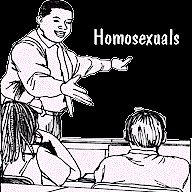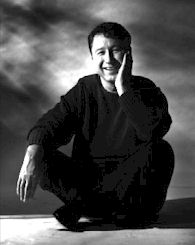 |

 |
|
Compiled By GayToday
 The editors of Overcoming Heterosexiam and Homophobia have gathered together activists who have been working to reduce heterosexism in classrooms and workshops, in professional training programs and in the workplace, in grassroots community organizations, in social and religious institutions, and in the mass media.
The editors of Overcoming Heterosexiam and Homophobia have gathered together activists who have been working to reduce heterosexism in classrooms and workshops, in professional training programs and in the workplace, in grassroots community organizations, in social and religious institutions, and in the mass media.
Rather than focusing on politics, the essays stress ways to change prejudicial attitudes and institutionalized discrimination in the general population. The authors of each chapter summarize their findings about what techniques are most effective, which ones are not effective, what mistakes should be avoided, and where we go from here.
These essays stress that the single most effective way to change homophobic attitudes is through one-to-one personal contacts of individuals with whom others share an ongoing association. Because repeated one-to-one discussion and dialogue is the most effective strategy, the most important action that same-sex inclined persons can do is to come out and discuss their affectional orientation with their relatives, friends and co-workers, and to engage in repeated dialogue about the negative effects of heterosexism. While the nature of "coming out" varies greatly from one society to another, depending on cultural norms for discussion of intimate personal matters, it is important for people in any society to be aware that they know and associate with persons who love others of the same sex. It is difficult to have a major impact on changing social attitudes without a pro-diversity viewpoint being discussed widely. We each need to take responsibility for bringing this viewpoint, to whatever extent is possible, into our own workplaces and into the homes of our relatives and friends. The social science research that has been done shows that people's attitudes are more affected by their relatives and friends, with whom they share an ongoing personal relationship, than any other single source. Once we have established this dialogue with those we are closest to, we can encourage them to radiate this anti-prejudicial influence further through society, by the same process of dialogue with their own circle of friends.
Part Three focuses on working with students, in teaching modules about homophobia in University Classroom Settings (in chapters by Diane DuBose Brunner, Donald N. Mager and Robert Sulek, Patricia Myers and Diana Kardia. Sue Sattel, Melissa Keyes and Pat Tupper focus on Sports classes. High School Classroom Settings are discussed by Paula Alida Roy, and by Paul Van de Ven who gives a perspective on Australia.
 Part Four deals with ways to reduce heterosexism in professional training programs. Elementary Schools are covered in chapters by Rita M. Marinoble, and by Patricia Hulsebosch and Mari E. Koerner. Counseling and Social Work professions are analyzed by Toby Emert and Lynne Milburn, and by Elizabeth P. Cramer. Heterosexism in Medical schools is discussed by Mollie M. Wallick and Mark H. Townsend. Training programs for Law Enforcement personnel is the emphasis of chapters by Chuck Stewart, and Suzanne Iasenza.
Part Four deals with ways to reduce heterosexism in professional training programs. Elementary Schools are covered in chapters by Rita M. Marinoble, and by Patricia Hulsebosch and Mari E. Koerner. Counseling and Social Work professions are analyzed by Toby Emert and Lynne Milburn, and by Elizabeth P. Cramer. Heterosexism in Medical schools is discussed by Mollie M. Wallick and Mark H. Townsend. Training programs for Law Enforcement personnel is the emphasis of chapters by Chuck Stewart, and Suzanne Iasenza.
Part Five focuses on institutions. Louie Crew, the founder of Integrity, provides lessons learned from the struggle to reduce institutional heterosexism in the Episcopal Churches. Father Robert Nugent takes a similar approach for the Catholic Church. The successful effort to persuade an important Asian American institution to endorse same-sex Marriage is the topic of J Craig Fong's essay on the Japanese American Citizens League. Part Five also evaluates effective strategies for reducing heterosexism through ECONOMIC means, in essays by M.V. Lee Badgett, James M. Andre, and Brian McNaught, who discusses changing the Workplace. In hierarchical institutions like business corporations, a top-down approach is often effective. If the boss can be convinced to establish and enforce policies prohibiting discrimination, that goes a long way to change the atmosphere in a workplace for lesbian and gay employees. In a situation where prejudiced workers understand they might lose their job if they engage in discrimination, most will adjust their behavior in order to advance their career. Cutting down on prejudicial behaviors, ranging from homophobic Joking to extreme Violence, usually leads to a gradual decline in prejudicial attitudes as well. A crucial element in institutional change is the necessity of having strong support from the institution's top administrators. Once that support is gained, other efforts to reduce heterosexism can be more effective. Lastly, Part Five concludes with two chapters on changing the Mass Media. Besides one-to-one repeated dialogue, the mass media has the most potential for reducing heterosexism. As examples of this important role, Robert L. Barret gives a case study showing how to change a newspaper's coverage of gay and lesbian issues, and Peter M. Nardi discusses the influential efforts of the Gay and Lesbian Alliance Against Defamation (GLAAD). Companies producing television, film, and radio programs, as well as publishers of major newspapers, magazines, and books, are all crucially important in setting the social standard for acceptance of sexual diversity. Given this importance, same-sex oriented persons can have a major impact on their society by taking employment in major media companies. The big media employers are important not only because they reach larger audiences of viewers and readers, but also because smaller businesses in the same fields usually follow their bigger competitors' trends. Having groups of open employees who will stand up to prejudice and engage in one-to-one dialogue with their co-workers and supervisors will do more than anything else to lessen homophobic rhetoric and present more positive depictions of transgender, bisexual, lesbian and gay people in these media. |
 © 1997-99 BEI
© 1997-99 BEI
 James T. Sears
James T. Sears